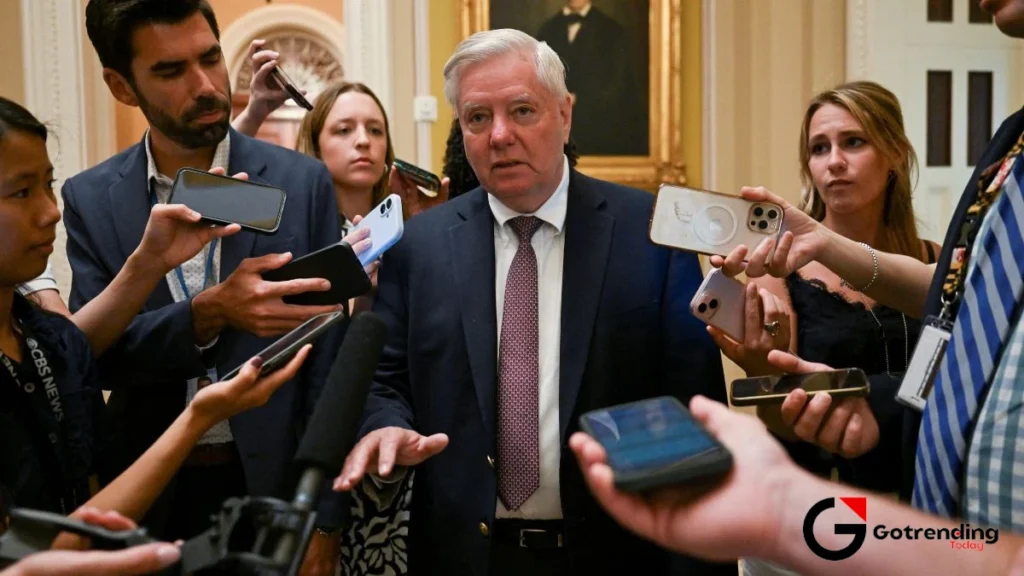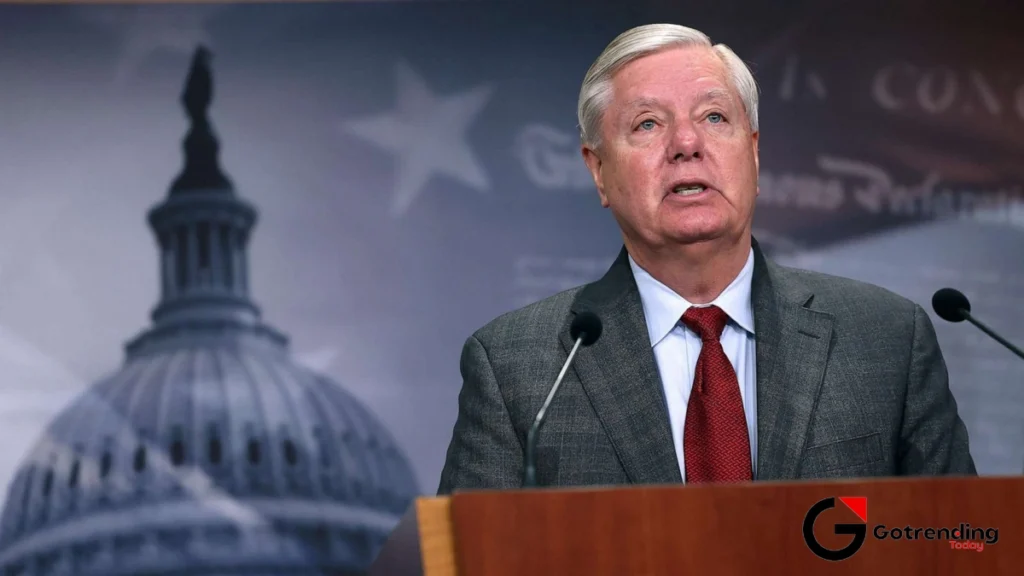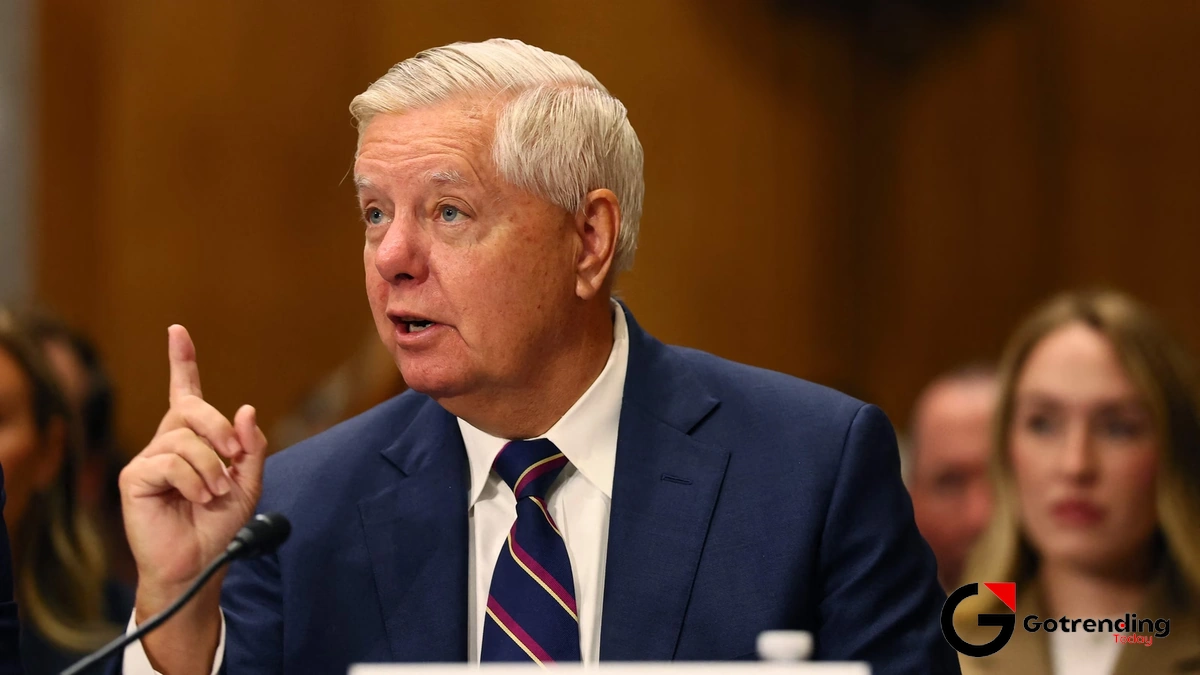Decoding Lindsey Graham | The Man Who Confuses Everyone
Have you ever watched a movie where a character keeps switching sides, and you can’t figure out if they’re a hero, a villain, or just incredibly confused? That’s kind of what it feels like to follow the career of Lindsey Graham. One minute he’s giving a fiery speech that sounds like something straight out of a history book, the next he’s on a golf course saying something that completely contradicts it. It’s bewildering. It’s frustrating. And honestly? It’s absolutely fascinating.
Here in India, American politics can often seem like a distant drama, a lot of noise about people we don’t know. But some figures matter more than others. And Graham, a senior US Senator from South Carolina, is one of them. He’s not just some back-bencher; he has a powerful voice on foreign policy, which directly impacts things like the US-India relations.
So, trying to understand him isn’t just an academic exercise. It’s about understanding a key player in a game that affects us all. But where do you even start?
The Two Grahams | The McCain Maverick vs. The Trump Ally

To really get a handle on Lindsey Graham, you have to understand that there are, essentially, two versions of him in the public consciousness. There’s Pre-2016 Graham and Post-2016 Graham.
The first version was the protégé and best friend of Senator John McCain. This Lindsey Graham was known as a “maverick.” A classic Republican, for sure, but one who was willing to work across the aisle with Democrats to get things done. He was a foreign policy hawk, a strong believer in American leadership on the world stage. I remember watching him during the McCain years; he was principled, even if you disagreed with his principles. He had a clear worldview. He championed a strong military and was deeply skeptical of Russia. This Graham seemed… consistent.
And then came Donald Trump.
Initially, Graham was one of Trump’s harshest critics within the Republican party. He called him a “kook” and “unfit for office.” He said the party had been “hijacked.” Then, something shifted. It was a slow pivot at first, then a full-blown transformation. The McCain maverick seemed to vanish, replaced by one of Trump’s most vocal and steadfast allies. The frustration for many long-time political watchers wasn’t just that he changed his mind, but the sheer whiplash of it all.
This brings us to the core puzzle of Lindsey Graham and Trump. Was it a political calculation for survival in a changing party? A genuine change of heart? Or something else entirely? The truth is, probably a bit of all three. Politics is a complex business, and survival is a powerful motivator. You can read up on the latest political shifts in the news, but few are as dramatic as this one.
What Does He Actually Believe? A Look at His Foreign Policy

This is where it gets really important for an international audience. I keep coming back to this point because it’s crucial: What does Lindsey Graham actually want America to do in the world? Because of his seniority, his voice carries a lot of weight on the Senate Armed Services Committee.
Here’s the thing, his core belief in a strong American military presence hasn’t really wavered. That’s been the one consistent thread. He believes that a weak America invites chaos. You can see this in his unwavering support for Ukraine against the Russian invasion and his tough stance on China. In this, he’s a very traditional Republican hawk.
So, what about India? This is where it gets interesting. Graham has generally been a strong supporter of the US-India partnership. He sees India as a critical democratic counterweight to China in the Indo-Pacific region. He’s part of a broad bipartisan consensus in Washington that believes a stronger relationship with New Delhi is vital for American interests. You’ll often find him making statements that support closer defense and economic ties, a perspective you might see echoed in reports from major outlets like India Today.
But and with Graham, there’s always a ‘but’ his alignment with the “America First” wing of the party creates a tension. How do you balance a desire for strong international alliances with an ideology that can often be skeptical of them? It’s a tightrope walk. So while his personal inclination seems to be very pro-India, the political winds he sails with can sometimes blow in the opposite direction. Watching him navigate that is key to understanding his future actions.
The Art of Political Survival

Let me try to explain this another way. Think of the Republican party over the last decade as a river that completely changed its course. Some politicians tried to build a dam and stop it. They mostly got washed away. Others, like Graham, seemed to look at the new current and just… build a new boat and learn to sail it. He is, above all else, a survivor.
He understands the political landscape of his home state, South Carolina, better than anyone. It’s a deeply conservative state where Trump remains incredibly popular. An anti-Trump Republican simply can’t win there. So, was his transformation a cynical ploy? Maybe. Was it a pragmatic choice to remain relevant and keep his Senate seat so he could still influence policy? Almost certainly.
It’s easy to sit on the sidelines and talk about principles, but the reality of politics is often about making messy compromises to stay in the game. It’s a bit like a high-stakes video game; you have to adapt to the changing map to win. Whether you admire that adaptability or see it as a lack of conviction is really the central question when it comes to judging Lindsey Graham. And honestly, I’m still not sure I have the answer.
A Few Questions You Might Be Asking
Why should someone in India care about a single US Senator?
Because senior senators, especially those on key committees like Armed Services or Foreign Relations, have a huge say in American foreign policy. Lindsey Graham’s views on issues like defense cooperation, trade, and strategic partnerships (especially concerning China) can directly influence the official US position towards India. He’s a player, not just a spectator.
What is Lindsey Graham’s actual stance on India?
Generally, it’s very positive. He has consistently supported a stronger US-India partnership, viewing India as a vital democratic ally in Asia. He is a member of the Senate India Caucus and has often advocated for deeper strategic and defense ties between the two countries. He sees a strong India as being in America’s best interest.
Is he a controversial figure in America?
Extremely. That’s putting it mildly. He draws criticism from both the left and the right. Democrats and liberals criticize him for his alliance with Donald Trump and his conservative stances. Some hardcore Trump supporters, on the other hand, are sometimes suspicious of him because of his past as a more moderate “maverick.” He’s one of those rare figures who manages to frustrate almost everyone at some point.
So, is he a reliable ally for India?
This is the tough question. His personal track record suggests he is. However, his political positions are often tied to the shifting sands of the Republican party. While his support for the US-India relationship seems firm, his overall political maneuvering can make him seem unpredictable. It’s best to see him as a generally supportive but complex figure.













